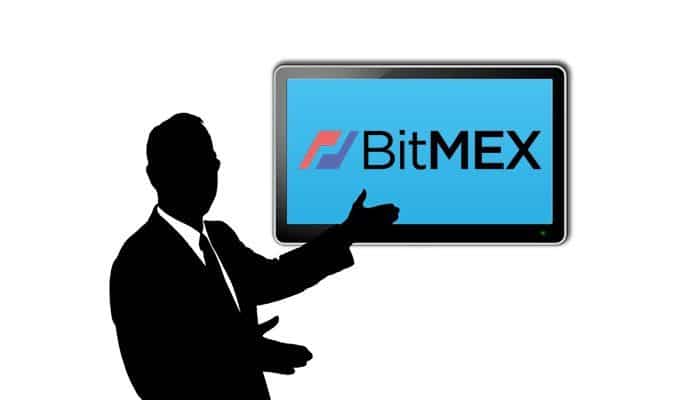Bitcoin and other digital assets are famous for the volatility that sees their prices fluctuate significantly in a short period of time. On 17th December 2017, Bitcoin’s price skyrocketed to nearly $20,000 before dropping down by over 60% in the first three months of 2018.
The decline came after the American business magnate Warren Buffet and other skeptics warned that the Bitcoin craze was a bubble that would eventually crash.
Using leverage in cryptocurrency trading
 If you would like to make money off the cryptocurrency market volatility, you may want to consider BitMEX leverage trading.
If you would like to make money off the cryptocurrency market volatility, you may want to consider BitMEX leverage trading.
BitMEX is one of the world’s most popular cryptocurrency exchanges that offer different financial products like margin trading for Bitcoin, Ethereum, and Litecoin.

The site also offers cryptocurrency derivatives and other financial products for investors. The concept behind BitMEX margin trading can be encountered in stock or futures trading as well.
The platform allows up to 100x leverage on a single trade. However, using leverage in cryptocurrency trading can be a double-edged sword. It can lead to significant profits or complete bankruptcy. In fact, leverage trading is, technically speaking, a form of gambling as opposed to investing.
It can be risky for beginners to use this method because they generally do not have experience in it. Nevertheless, success can still be achieved with the correct level of leveraging and the right level of risk management. The cardinal rule of gambling is never bet more than you can comfortably afford to lose.
How BitMEX leverage trading works
Leverage trading on BitMEX is easy. To start with, you need to sign up for a BitMEX account. The platform permits the creation of anonymous accounts. Giving your real name is not mandatory. In order to start trading, you need to deposit some amount of cryptocurrency first.

A quick reminder: don’t send Litecoin, Ripple or any other altcoin, no matter which type of contract you want to purchase – your money will be lost. Only Bitcoin is accepted. Also, funds can only be withdrawn in Bitcoin.
After the deposits are confirmed, you can start trading with up to 100x leverage. This means that if you have 0.01 BTC in your account, you can buy 1 bitcoin in a single trade.
Note that BitMEX deals in digital currencies only. You cannot buy and sell Bitcoin futures using fiat currencies such as dollars or euros.
Contracts
BitMEX offers two types of contracts, namely a futures contract and a perpetual contract.

Futures contracts
A futures contract is basically an agreement between a seller and a buyer to exchange an asset at a defined point in the future and for an agreed price. At a set point in time, the underlying asset will swap hands.
Unlike a traditional stock purchase, you do not own the stock, meaning you aren’t entitled to dividends. You are also not allowed to attend AGMs. Similarly, a BitMEX futures contract allows traders to trade coins without having to own them.
But unlike traditional stock market investing, you don’t only make money when the price goes up. With BitMEX futures contracts, you can make money even when the price of cryptocurrencies plummets.
Almost all commodities can have a futures contract defined for it. Every business person, e.g., a real estate investor, an exporter or a hog farmer is exposed to risk. To mitigate this risk, they can hedge by selling or purchasing a futures contract.
Perpetual contract
A perpetual contract is similar to a futures contract but does not have a specific date in the future at which it expires. As the name suggests, a perpetual contract is continuously renewed. It traces the price of the underlying asset and is supposed to be less volatile than conventional futures contracts. Perpetual contracts are best suited for long-term investors.
A single contract in a perpetual swap for bitcoin is worth $1. This means that if you have 0.01 BTC in your account which equals $50 in price at a market price of $5000, you can buy 5000 contracts at 100x leverage. With a 10x leverage, you can purchase 500 contracts. If you think the price is going to rise, you have to buy more. If you are right, you can make a huge return on your margin deposit.
If you think the price of Bitcoin will fall in the next three months or so, then you have to go short.
Taking a long position
When you take a long position on an asset, you buy Bitcoin on an open market and you expect the prices to rise over a reasonable period. It means you are buying the asset, and your profit relies on it skyrocketing in value.
You would be kicking yourself now if you went long at the end of 2017 when prices reached an all-time high of close to $20000 per Bitcoin. Of course, pundits project the price of Bitcoin to exceed $20,000 over the next few years.
But what is more interesting about purchasing and selling a futures contract with BitMEX is that you only pay for a percentage of the price of the contract. In other words, you are buying on margin. Simply put, you are buying it on borrowed money.
So let’s say you bought 10 BTC at around 19000 USD in November 2017. You could have sold the currencies for 19000 USD per coin at that time, and then refunded your creditor with about $6000 per currency when prices were at their worst in February 2018 – raking in a whopping 13000 USD profit on every coin.
Another example: let’s say the current price of BTC is $6300 and you have $6300. You decided to use 5x leverage. That means you can buy 5 BTC for $6300. If Bitcoin increases just by 100 USD you get 500 USD. This is the kind of methodology a lot of people are adopting right now.
If you use 100x leverage to acquire 100 Bitcoin, you will either make a lot of profit or incur a lot of losses. And if the market moves against your position, the BitMEX Insurance Fund wins.
The same logic holds for going short.





